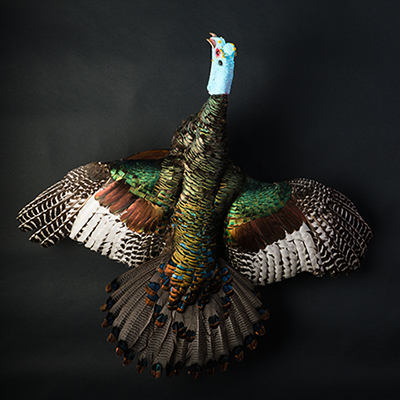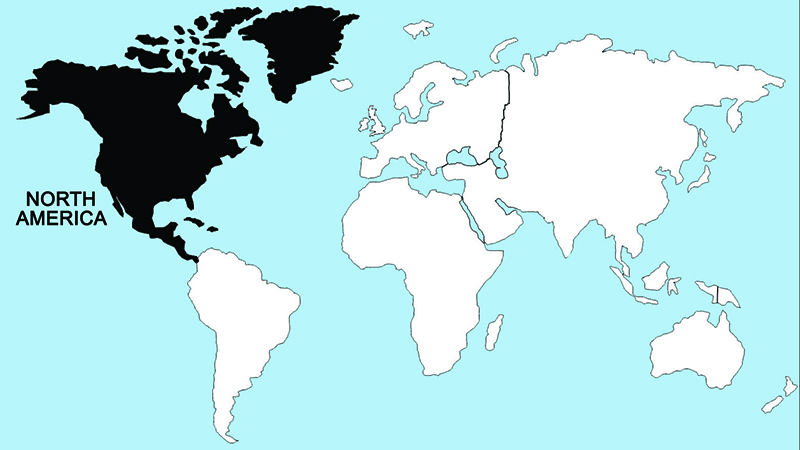Ocellated Turkey

The ocellated turkey has a limited range in the Yucatan Peninsula of Mexico and northern parts of Belize and Guatemala where it occurs in tropical scrub forests, overgrown cultivated areas, clearings, and brushlands. It is generally found in small groups, and is wary and rarely seen except where it is fully protected. Adult males differ markedly from the North American wild turkey; the head and neck are bright blue, with orange warts, a conspicuous red ring around the eye, and a forehead wattle that can be engorged during display, but otherwise hangs down over the beak. There is a protuberance on the crown that can be enlarged during display. Much of the body plumage resembles the North American species, but the longer upper tail coverts and tail feathers are tipped with large iridescent bluish eyespots (ocelli), and are tipped with gold.
Foraging is done mostly on the ground, but roosting takes place high in trees. The reproductive behavior of this species is probably much like that of the North American turkey, but its vocalizations are quite distinctive. Males call in a series of six or seven bongo-like notes that speed up in volume and cadence until they reach a crescendo. The female makes a well-concealed nest on the ground, and lays a clutch of 8–15 eggs. Incubation requires about 28 days, and the family leaves the nest within 24 hours after hatching.
Regions Birds Are Found

Collection Location & Year
Mexico - Yucatan 1988
Taxonomy
| Order | Galliformes |
|---|---|
| Family | Phasianidae |
| Sub Family | Meleagridinae |
| Species | Meleagris |
| Genus | ocellata |
Gender
Male
References
- Leopold, A. S. 1969. Wildlife of Mexico: The Game Birds and Mammals. Berkeley, CA: University of California Press.
- del Hoyo, J. A. Elliot, and J. Sargatal, eds. 1994. Handbook of Birds of the World. Vol. 2 (New World Vultures to Guineafowl). Barcelona, Spain: Lynx Editions.